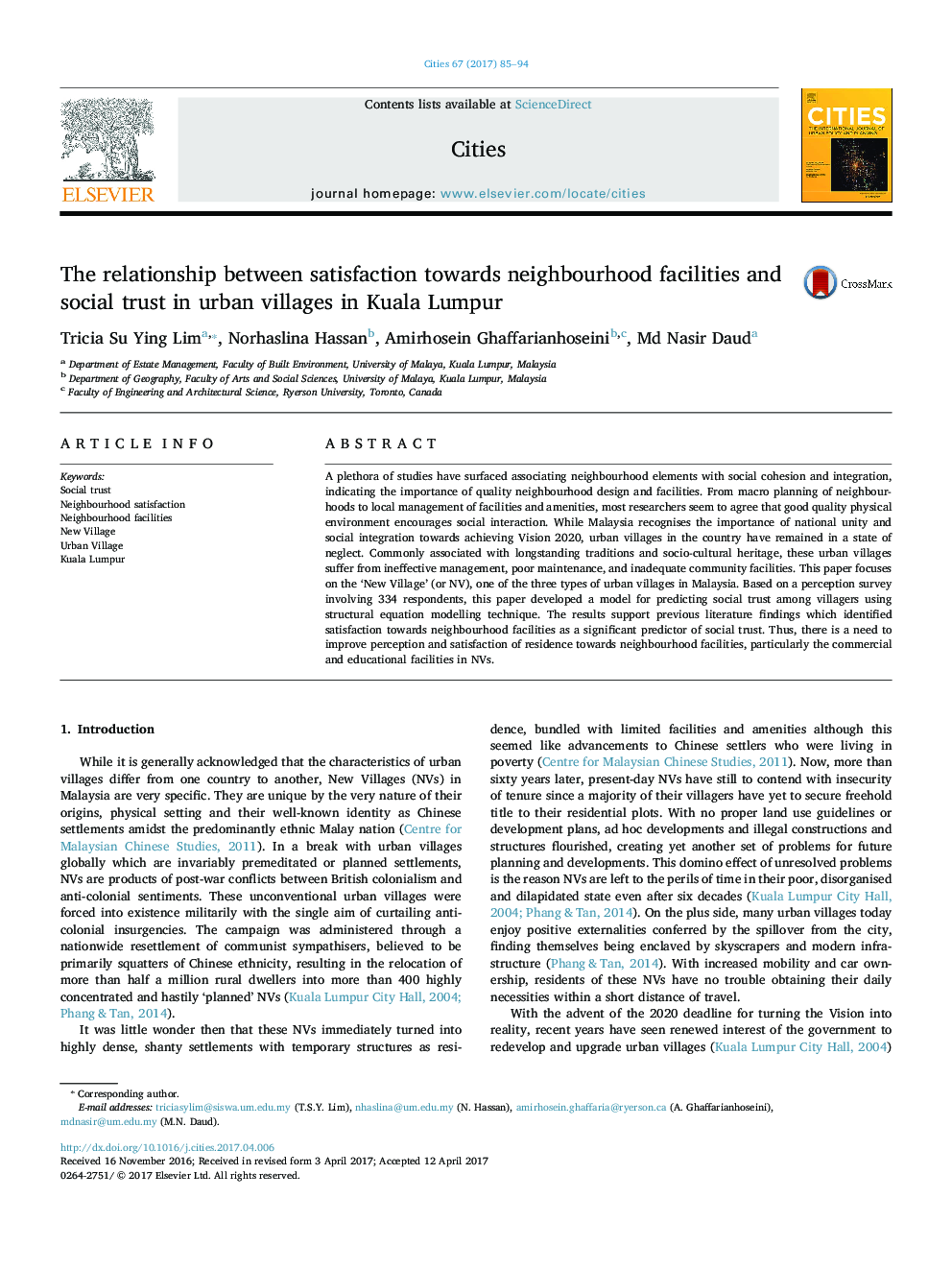| Article ID | Journal | Published Year | Pages | File Type |
|---|---|---|---|---|
| 5108015 | Cities | 2017 | 10 Pages |
Abstract
A plethora of studies have surfaced associating neighbourhood elements with social cohesion and integration, indicating the importance of quality neighbourhood design and facilities. From macro planning of neighbourhoods to local management of facilities and amenities, most researchers seem to agree that good quality physical environment encourages social interaction. While Malaysia recognises the importance of national unity and social integration towards achieving Vision 2020, urban villages in the country have remained in a state of neglect. Commonly associated with longstanding traditions and socio-cultural heritage, these urban villages suffer from ineffective management, poor maintenance, and inadequate community facilities. This paper focuses on the 'New Village' (or NV), one of the three types of urban villages in Malaysia. Based on a perception survey involving 334 respondents, this paper developed a model for predicting social trust among villagers using structural equation modelling technique. The results support previous literature findings which identified satisfaction towards neighbourhood facilities as a significant predictor of social trust. Thus, there is a need to improve perception and satisfaction of residence towards neighbourhood facilities, particularly the commercial and educational facilities in NVs.
Related Topics
Social Sciences and Humanities
Business, Management and Accounting
Tourism, Leisure and Hospitality Management
Authors
Tricia Su Ying Lim, Norhaslina Hassan, Amirhosein Ghaffarianhoseini, Md Nasir Daud,
